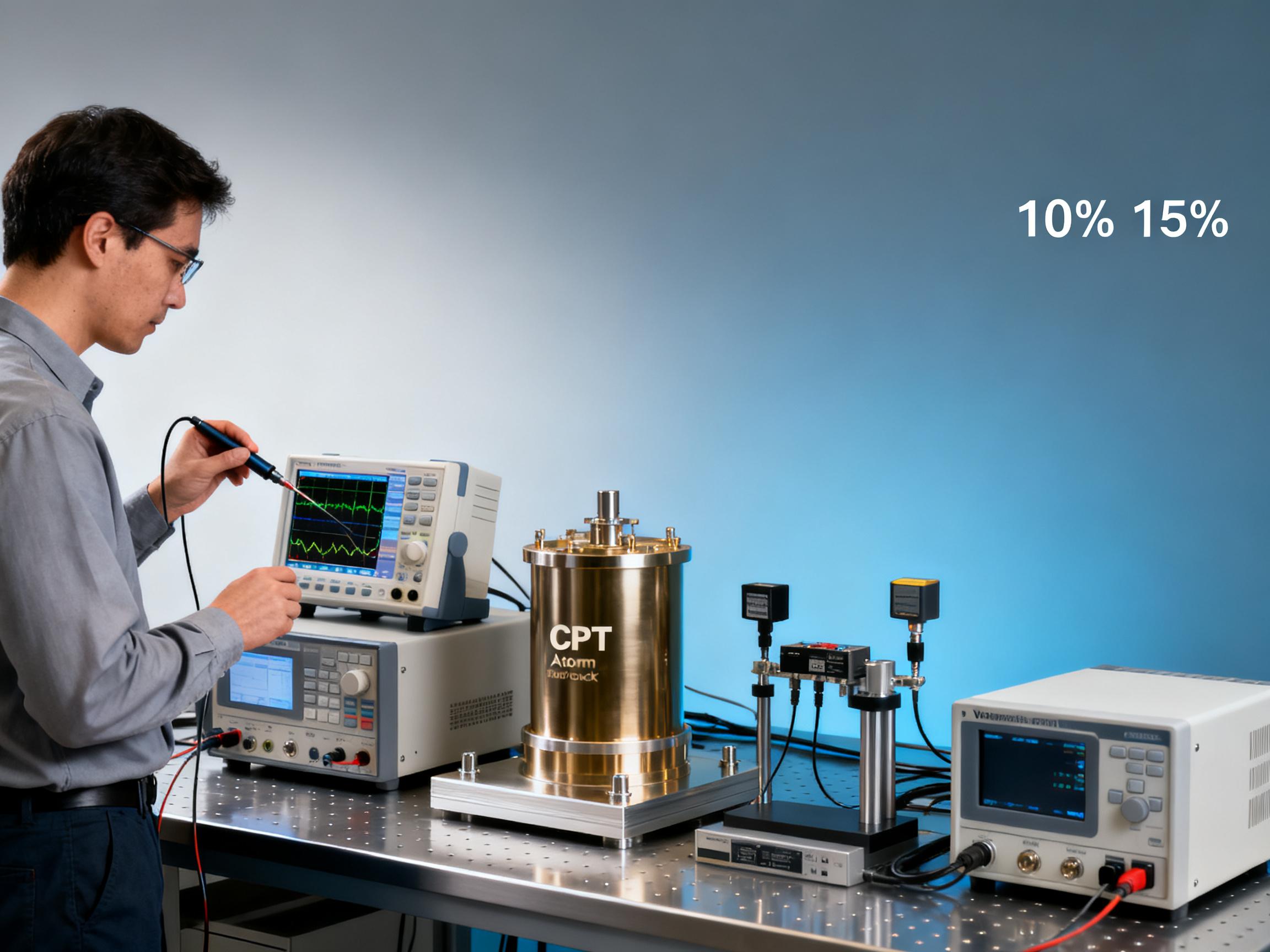RELATED
![How CPT Atomic Clocks Reduce OPEX in 5G Base Stations [Real Data] How CPT Atomic Clocks Reduce OPEX in 5G Base Stations [Real Data]](https://usimg.bjyyb.net/grey.png?x-oss-process=image/resize,m_fixed,w_800,h_600,limit_0) How CPT Atomic Clocks Reduce OPEX in 5G Base Stations [Real Data]2025-12-11
How CPT Atomic Clocks Reduce OPEX in 5G Base Stations [Real Data]2025-12-11 2024 CPT Atomic Clock vs Rubidium: Which Offers Better Stability for Telecom Networks?2025-12-08
2024 CPT Atomic Clock vs Rubidium: Which Offers Better Stability for Telecom Networks?2025-12-08 Live Demo Results: CPT Atomic Clock Performance Under Harsh Environmental Tests (Data Inside)2025-12-05
Live Demo Results: CPT Atomic Clock Performance Under Harsh Environmental Tests (Data Inside)2025-12-05 Budgeting for Precision: Total Cost of Ownership for a Rubidium Atomic Clock Over 5 Years2025-12-03
Budgeting for Precision: Total Cost of Ownership for a Rubidium Atomic Clock Over 5 Years2025-12-03
MESSAGE
With the rapid development of science and technology, atomic clocks, as an important cornerstone of modern science and technology, play a crucial role in fields such as satellite navigation, communications, electricity, and finance due to their precision and stability. In this field, Chinese scientists have once again achieved a major breakthrough by successfully developing a new type of rubidium atomic clock with an international leading level, breaking the international record and adding another glorious achievement to China's scientific and technological undertakings.
I. Rubidium Atomic Clock: The "Time Guardian" in the Field of Science and Technology
Atomic clocks, as the name suggests, are timers based on atoms. Compared with traditional mechanical clocks, quartz clocks, etc., atomic clocks have higher precision and stability and can maintain accurate time measurement over an extremely long period. Among them, the rubidium atomic clock has become one of the atomic clocks with the highest market share due to its advantages such as small size, light weight, and low power consumption, and is widely used in various fields.
However, with the continuous development of science and technology, the performance requirements for rubidium atomic clocks are also increasing. To meet this demand, the research team led by Mei Ganghua from the Innovation Academy for Precision Measurement Science and Technology of the Chinese Academy of Sciences has overcome difficulties over many years and successfully developed a new type of rubidium atomic clock with an international leading level.
II. Major Breakthrough: The Stability Breaks the International Record
Frequency stability is the core indicator of atomic clocks and directly determines their timekeeping precision and reliability. In this research, the team led by Mei Ganghua conducted in-depth research and innovation on the key technologies of the rubidium atomic clock. Starting from three aspects, namely improving the signal-to-noise ratio of atomic signals, reducing the phase noise of the probing microwave, and suppressing the environmental sensitivity of the atomic system, they achieved a major breakthrough.
Firstly, in the design of the physical system, the team adopted new technologies with independent intellectual property rights, such as slotted-tube microwave cavities, large-sized rubidium vapor cells, pumping light sources with high spectral purity, and double filtering. These effectively improved the signal-to-noise ratio of atomic signals and raised the frequency stability to an unprecedented level of 4.7×10⁻¹⁴τ⁻¹/². This achievement provides a powerful guarantee for the precision and stability of the rubidium atomic clock.
Secondly, the team also made important progress in circuit design. They designed a low-phase-noise frequency synthesizer, which controlled the impact of circuit noise on the stability of the rubidium clock at a level of 6.0×10⁻¹⁴τ⁻¹/². This innovation not only reduced the impact of circuit noise on the performance of the atomic clock but also provided strong support for subsequent technological upgrades.
In addition, in order to further improve the environmental adaptability of the rubidium atomic clock, the team also used a sealed box to isolate the physical system from the atmospheric environment. This measure successfully reduced the impact of atmospheric pressure fluctuations on the stability of the rubidium clock by an order of magnitude, providing a powerful guarantee for the application of the rubidium atomic clock in complex environments.
Based on the above technological breakthroughs and innovations, the team led by Mei Ganghua successfully developed a prototype of the new rubidium atomic clock principle, and its frequency stability reached an astonishing level of 9.0×10⁻¹⁴τ⁻¹/² (1s - 100s). This is the first time that the frequency stability index of the rubidium atomic clock has entered the order of magnitude of 10⁻¹⁴τ⁻¹/², breaking the international record and laying a solid foundation for the development of China's atomic clock technology.
III. Application Prospects: Leading the Trend of Science and Technology and Boosting National Development
The successful development of the new rubidium atomic clock has not only injected new vitality into the development of China's atomic clock technology but also provided strong support for national defense and economic fields such as satellite navigation, communications, electricity, and finance.
In the field of satellite navigation, high-precision and high-stability atomic clocks are the key to ensuring the accuracy and reliability of navigation. The application of the new rubidium atomic clock is expected to improve the navigation accuracy and stability of China's Beidou Satellite Navigation System and further enhance its competitiveness in the international market.
In the field of communications, the high-precision timekeeping function of atomic clocks is of great significance for ensuring the synchronization and stability of communication networks. The promotion and application of the new rubidium atomic clock are expected to improve the performance and reliability of China's communication networks and provide strong support for the development of new-generation communication technologies such as 5G and 6G.
In addition, in fields such as electricity and finance, the high-precision and high-stability characteristics of the new rubidium atomic clock will also play an important role. For example, in the power system, atomic clocks can ensure the synchronous operation and accurate measurement of the power grid; in the financial field, the high-precision timekeeping function of atomic clocks can provide reliable timestamp services for financial transactions.
In conclusion, the successful development and application of the new rubidium atomic clock will lead the trend of science and technology and boost national development. We look forward to this achievement bringing revolutionary changes and progress to more fields in the future.
CONTACT US
Please use the form below to get in touch.
If you need a reply we will get in touch as soon as possible.

![How CPT Atomic Clocks Reduce OPEX in 5G Base Stations [Real Data] How CPT Atomic Clocks Reduce OPEX in 5G Base Stations [Real Data]](https://usimg.bjyyb.net/sites/91500/91958/1765179857856560163985903616.jpeg)



